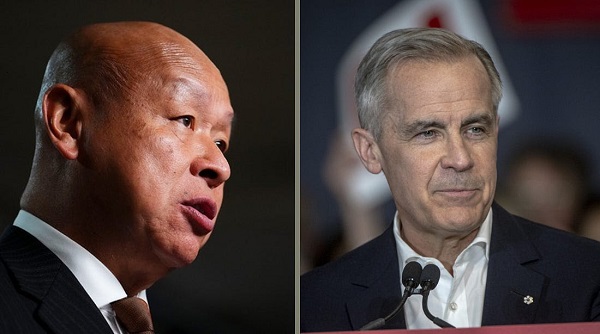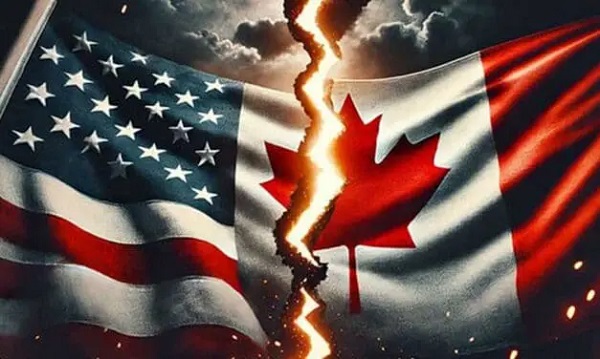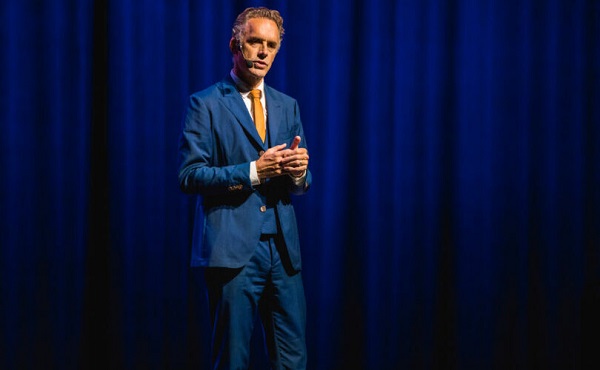Uncategorized
Search crews look for the dead and the living in Florida

MEXICO BEACH, Fla. — Florida authorities fielded a barrage of calls about people missing in Hurricane Michael’s aftermath as search-and-rescue teams Friday made their way through flattened
The number of dead was expected to rise, but authorities scrapped plans to set up a temporary morgue, indicating they had yet to see signs of mass casualties from the most powerful hurricane to hit the continental U.S. in nearly 50 years.
Residents, meanwhile, began to come to grips with the destruction and face up to the uncertainty that lies ahead.
“I didn’t recognize nothing. Everything’s gone. I didn’t even know our road was our road,” said 25-year-old Tiffany Marie Plushnik, an evacuee who returned to find her home in Sandy Creek too damaged to live in.
When she went back to the hotel where she took shelter from the storm, she found out she could no longer stay there either because of
“We’ve got to figure something out. We’re starting from scratch, all of us,” Plushnik said.
Across the ravaged region, officials set up distribution
President Trump announced plans to visit Florida and hard-hit Georgia early next but didn’t say what day he would arrive.
“We are with you!” he tweeted.
Search teams continued to pick their way through the ruins of Mexico Beach, the ground-zero town of about 1,000 people that was nearly wiped off the map when Michael blew ashore there on Wednesday with devastating 155 mph (249 kph) winds. Blocks and blacks of homes were demolished.
State officials said that by one count, 285 people in Mexico Beach defied mandatory evacuation orders and stayed behind. Whether any of them got out at some point was unclear.
Emergency officials said they have received thousands of calls asking about missing people. But with cellphone service out across vast swaths of the Florida Panhandle, officials said it is possible that some of those unaccounted for are safe and just haven’t been able to contact friends or family to let them know.
Gov. Rick Scott said state officials still “do not know enough” about the fate of those who stayed behind in the region.
“We are not completely done. We are still getting down there,” the governor added.
Emergency officials said they had done an initial “hasty search” of 80
Shell-shocked survivors who barely escaped with their lives told of terrifying winds, surging floodwaters and homes cracking like eggs.
Federal Emergency Management Agency chief Brock Long said he expects to see the death toll rise.
“We still haven’t gotten into the hardest-hit areas,” he said, adding with frustration: “Very few people live to tell what it’s like to experience storm surge, and unfortunately in this country we seem to not learn the lesson.”
Long expressed worry that people have suffered “hurricane amnesia.”
“When state and local officials tell you to get out, dang it, do it. Get out,” he said.
___
Contributors in Florida include Associated Press writers Jay Reeves in Panama City, Brendan Farrington in St. Marks, Gary Fineout in Tallahassee, Tamara Lush in St. Petersburg, Terry Spencer in Fort Lauderdale, and Jennifer Kay and Freida Frisaro in Miami. Others include Jonathan Drew in Raleigh, North Carolina, Darlene Superville in Washington, and Seth Borenstein in Kensington, Maryland.
___
For the latest on Hurricane Michael, visit https://www.apnews.com/tag/Hurricanes
Russ Bynum And Brendan Farrington, The Associated Press
Uncategorized
Kananaskis G7 meeting the right setting for U.S. and Canada to reassert energy ties


Energy security, resilience and affordability have long been protected by a continentally integrated energy sector.
The G7 summit in Kananaskis, Alberta, offers a key platform to reassert how North American energy cooperation has made the U.S. and Canada stronger, according to a joint statement from The Heritage Foundation, the foremost American conservative think tank, and MEI, a pan-Canadian research and educational policy organization.
“Energy cooperation between Canada, Mexico and the United States is vital for the Western World’s energy security,” says Diana Furchtgott-Roth, director of the Center for Energy, Climate and Environment and the Herbert and Joyce Morgan Fellow at the Heritage Foundation, and one of America’s most prominent energy experts. “Both President Trump and Prime Minister Carney share energy as a key priority for their respective administrations.
She added, “The G7 should embrace energy abundance by cooperating and committing to a rapid expansion of energy infrastructure. Members should commit to streamlined permitting, including a one-stop shop permitting and environmental review process, to unleash the capital investment necessary to make energy abundance a reality.”
North America’s energy industry is continentally integrated, benefitting from a blend of U.S. light crude oil and Mexican and Canadian heavy crude oil that keeps the continent’s refineries running smoothly.
Each day, Canada exports 2.8 million barrels of oil to the United States.
These get refined into gasoline, diesel and other higher value-added products that furnish the U.S. market with reliable and affordable energy, as well as exported to other countries, including some 780,000 barrels per day of finished products that get exported to Canada and 1.08 million barrels per day to Mexico.
A similar situation occurs with natural gas, where Canada ships 8.7 billion cubic feet of natural gas per day to the United States through a continental network of pipelines.
This gets consumed by U.S. households, as well as transformed into liquefied natural gas products, of which the United States exports 11.5 billion cubic feet per day, mostly from ports in Louisiana, Texas and Maryland.
“The abundance and complementarity of Canada and the United States’ energy resources have made both nations more prosperous and more secure in their supply,” says Daniel Dufort, president and CEO of the MEI. “Both countries stand to reduce dependence on Chinese and Russian energy by expanding their pipeline networks – the United States to the East and Canada to the West – to supply their European and Asian allies in an increasingly turbulent world.”
Under this scenario, Europe would buy more high-value light oil from the U.S., whose domestic needs would be back-stopped by lower-priced heavy oil imports from Canada, whereas Asia would consume more LNG from Canada, diminishing China and Russia’s economic and strategic leverage over it.
* * *
The MEI is an independent public policy think tank with offices in Montreal, Ottawa, and Calgary. Through its publications, media appearances, and advisory services to policymakers, the MEI stimulates public policy debate and reforms based on sound economics and entrepreneurship.
As the nation’s largest, most broadly supported conservative research and educational institution, The Heritage Foundation has been leading the American conservative movement since our founding in 1973. The Heritage Foundation reaches more than 10 million members, advocates, and concerned Americans every day with information on critical issues facing America.
Uncategorized
Poilievre on 2025 Election Interference – Carney sill hasn’t fired Liberal MP in Chinese election interference scandal

From Conservative Party Communications
“Yes. He must be disqualified. I find it incredible that Mark Carney would allow someone to run for his party that called for a Canadian citizen to be handed over to a foreign government on a bounty, a foreign government that would almost certainly execute that Canadian citizen.
“Think about that for a second. We have a Liberal MP saying that a Canadian citizen should be handed over to a foreign dictatorship to get a bounty so that that citizen could be murdered. And Mark Carney says he should stay on as a candidate. What does that say about whether Mark Carney would protect Canadians?
“Mark Carney is deeply conflicted. Just in November, he went to Beijing and secured a quarter-billion-dollar loan for his company from a state-owned Chinese bank. He’s deeply compromised, and he will never stand up for Canada against any foreign regime. It is another reason why Mr. Carney must show us all his assets, all the money he owes, all the money that his companies owe to foreign hostile regimes. And this story might not be entirely the story of the bounty, and a Liberal MP calling for a Canadian to be handed over for execution to a foreign government might not be something that the everyday Canadian can relate to because it’s so outrageous. But I ask you this, if Mark Carney would allow his Liberal MP to make a comment like this, when would he ever protect Canada or Canadians against foreign hostility?
“He has never put Canada first, and that’s why we cannot have a fourth Liberal term. After the Lost Liberal Decade, our country is a playground for foreign interference. Our economy is weaker than ever before. Our people more divided. We need a change to put Canada first with a new government that will stand up for the security and economy of our citizens and take back control of our destiny. Let’s bring it home.”
-

 Alberta23 hours ago
Alberta23 hours agoUnified message for Ottawa: Premier Danielle Smith and Premier Scott Moe call for change to federal policies
-

 Alberta2 days ago
Alberta2 days agoCentral Alberta MP resigns to give Conservative leader Pierre Poilievre a chance to regain a seat in Parliament
-

 Business15 hours ago
Business15 hours agoRFK Jr. planning new restrictions on drug advertising: report
-

 Business1 day ago
Business1 day agoCanada’s economic pain could be a blessing in disguise
-

 Business1 day ago
Business1 day agoRhetoric—not evidence—continues to dominate climate debate and policy
-

 espionage4 hours ago
espionage4 hours agoFrom Sidewinder to P.E.I.: Are Canada’s Political Elites Benefiting from Beijing’s Real Estate Reach?
-

 conflict1 day ago
conflict1 day agoTrump dismisses US intelligence that Iran wasn’t pursuing nuclear bomb before Israeli attack
-

 Censorship Industrial Complex1 day ago
Censorship Industrial Complex1 day agoJordan Peterson reveals DEI ‘expert’ serving as his ‘re-education coach’ for opposing LGBT agenda






